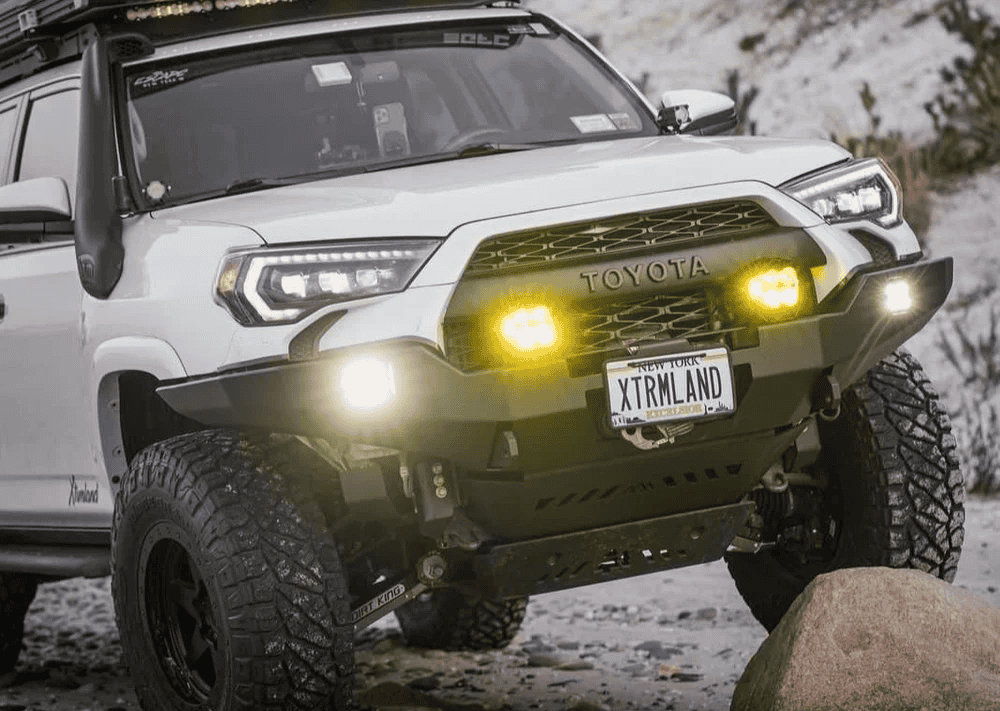Overland Vehicles

Every Land Cruiser can travel far from pavement, but each generation brings different strengths. Solid axle 70 and 80 series excel in slow technical terrain with strong articulation and simple service needs. The 100 series blends V8 power with comfort, while the 200 series adds refined road manners and advanced traction control. Newer models may use hydraulic or active sway systems, which improve handling but require careful parts selection when adding weight. Start by defining where you go and how much you carry, then let the platform guide the plan.
Overland travel rewards smart weight choices. Know curb weight, payload rating, and real cargo mass for people, fuel, water, and gear. Heavy items ride low and centered to protect bearings and brakes, keep handling predictable, and reduce body stress. Roof loads should stay modest to limit roll and wind resistance. A practical rule is to stabilize weight first, then upgrade power or braking only if needed.
Choose springs and shocks for steady control with your typical trip weight, not the heaviest scenario you might attempt. A mild two inch lift with quality shocks often rides better and lasts longer than a tall, soft setup. Upper control arms can restore alignment on independent front models and improve on road feel. Remote reservoir shocks and progressive coils help manage corrugations and heat when miles get rough. Refresh bushings and steering components so alignment holds and tires wear evenly.
Tire size affects range, acceleration, braking, and driveline stress. A 33 inch tire is a sweet spot for many Land Cruiser builds, while 35 inch tires demand lower gearing, careful trimming, and stronger steering parts. Pick a light yet strong wheel with proper offset to maintain scrub radius and fender clearance. Air down for traction on dirt, then air up for highway stability and tire life. Match tread to terrain and trip length, and carry a full size spare.
Armor protects your trip more than your truck. A front bumper with a properly rated winch, quality recovery points, and a hidden cradle for tools goes a long way. Skid plates guard vital parts, while rock sliders shield pinch seams and doors from trail strikes. Carry a kinetic rope, soft shackles that match your recovery rating, and traction boards for sand or snow. On board air makes tire work easy and supports air lockers if equipped. Lights matter, but aim them carefully to reduce glare and dust glow from your own plume.
Long range travel depends on range and water, not just horsepower. A simple auxiliary tank or tidy fuel storage plan extends your map without overloading the roof. Water capacity should follow your climate and group size; filter systems reduce the need to haul every gallon. Keep mass off the rear door when possible and consider a swing carrier only if your trip pattern truly requires it.
Start with a realistic electrical budget. A compact lithium battery with a DC DC charger supports a fridge, lights, fans, and device charging with minimal space. Add solar as a range extender rather than a crutch, and route cables with abrasion protection and service loops. Use a quality fuse block and label every circuit so field repairs are quick.
Storage works best when it removes friction. A low drawer system and a slide for the fridge keep daily use items fast to reach. Soft bags and modular bins ride quietly and adapt to changing loads. A compact galley with a stable cook surface beats elaborate furniture that eats payload. For comms and navigation, pair a reliable mapping app with an offline plan and carry GMRS for group travel. Maintenance remains the backbone of reliability: fresh cooling system parts, healthy wheel bearings, clean air filtration, and regular fluid service will carry you farther than any single accessory.
As you plan, consider how each addition affects the whole. More lift may mean more angle on driveline parts. Bigger tires call for deeper gears and stronger brakes. Roof loads add sway and slow steering response. A thoughtful Land Cruiser overland build aligns parts with purpose, keeps weight in check, and favors serviceable solutions you can maintain on the road.
When you are ready to turn planning into a finished rig, explore Overland rigs by OZK to see how a complete approach ties chassis, armor, power, and storage into one coherent system. If you want a tailored package that honors your cargo and travel style, review our custom overland upfit process for build paths and timelines. Curious about shop standards and handoff experience, including travel day support and systems training, learn more at why choose OZK Customs.
Your Land Cruiser is already a legend. We make it road tested for the way you explore, from weight matched suspension to tidy power and storage that work on day one. Share how you travel, which series you own, and the gear you carry. We will map an overland plan that respects payload, improves range and comfort, and stays easy to service for the long haul.
Your Land Cruiser deserves a build that travels farther and lasts longer. Tell us how you roam and we will design a complete overland upfit that fits your cargo, range, and comfort goals. Share a few details and our team will map your ideal setup, timeline, and budget.
ADDRESS:
6159 E Huntsville Rd, Fayetteville, AR 72701
PHONE:
(479) 326-9200
EMAIL:
info@ozkvans.com